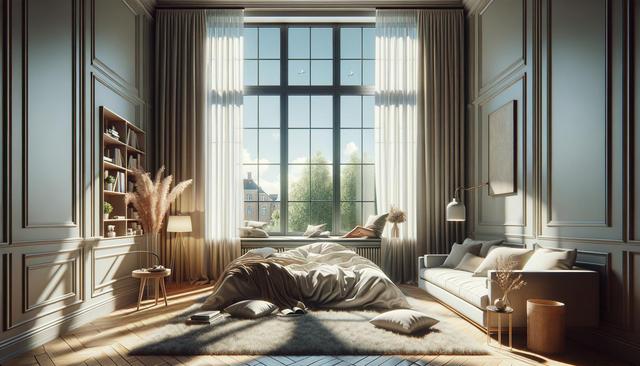Understanding the Purpose of Window Treatments
Window treatments serve both functional and aesthetic purposes in a home or workspace. They are essential for managing natural light, enhancing privacy, and improving insulation. Depending on the room, the needs for window treatments can vary. For instance, bedrooms often require blackout options to block light for better sleep, while living areas may benefit from sheer fabrics that filter sunlight without completely darkening the room.
The right treatment can also help protect furniture and flooring from UV damage. Beyond functionality, window treatments contribute significantly to a room’s design. With a wide range of styles, colors, and materials available, they offer an opportunity to express personal taste and complement the interior décor. Whether aiming for a minimalist look or a more elaborate design, window treatments play a key role in the overall ambiance of a space.
Types of Window Treatments and Their Features
There are several types of window treatments to choose from, each with its own benefits. Some of the most common types include:
- Blinds: Available in vertical or horizontal formats, blinds offer precise control over light and privacy.
- Shades: These come in various styles such as roller, Roman, or cellular, and provide a sleek look with solid fabric panels.
- Curtains and Drapes: Fabric panels that hang from rods, offering both decorative appeal and functional coverage.
- Shutters: A more permanent solution, shutters are mounted within the window frame and add architectural interest.
Each type has its strengths. For example, cellular shades are known for their energy efficiency due to their honeycomb structure, while drapes can be layered for added insulation and style. Choosing the right one depends on your specific goals—whether that’s controlling light, improving privacy, or enhancing the room’s look.
Choosing the Right Window Treatment for Each Room
Different rooms have different needs, and selecting window treatments should consider the room’s function and exposure to sunlight. For example:
- Living Room: Sheer curtains or light-filtering shades work well here, allowing in natural light while maintaining a level of privacy.
- Bedroom: Blackout curtains or layered treatments provide optimal light control and insulation for better sleep quality.
- Kitchen: Easy-to-clean options like aluminum blinds or roller shades are practical due to exposure to moisture and cooking odors.
- Bathroom: Moisture-resistant materials like faux wood blinds or vinyl shutters are ideal for humid environments.
It’s also important to consider safety, especially in households with children or pets. Cordless or motorized options can reduce hazards while offering convenience. Matching the treatment to the room’s specific needs ensures both practicality and aesthetic harmony.
Material Choices and Their Impact
The material of your window treatments can significantly influence their performance and appearance. Natural fabrics like cotton and linen provide a soft, airy feel perfect for casual spaces, while heavier materials such as velvet offer a luxurious look and better insulation. Synthetic fabrics often offer greater durability and resistance to fading, which is beneficial in sunlit areas.
Wood and faux wood are popular options for blinds and shutters, providing a warm, timeless look. Faux wood, in particular, is more resistant to warping and moisture, making it suitable for bathrooms and kitchens. Metal blinds are durable and add a sleek, modern touch to interiors.
When choosing materials, consider the following factors:
- Durability and maintenance
- Light-filtering or blocking capability
- Compatibility with room humidity and temperature
- Style and color coordination with existing décor
Material choice plays a critical role in achieving the desired balance between form and function. It’s worth investing time in researching materials that meet both aesthetic preferences and daily living needs.
Installation and Maintenance Tips
Proper installation is essential to ensure your window treatments function correctly and look polished. Most treatments can be installed with basic tools, but it’s important to measure carefully and follow manufacturer instructions. In some cases, professional installation may be beneficial, especially for customized or motorized systems.
Maintenance varies depending on the type and material. Fabric curtains typically require occasional washing or dry cleaning, while blinds and shades can be dusted or wiped with a damp cloth. Motorized and smart window treatments may need software updates or battery replacements over time.
Here are a few general tips for maintaining window treatments:
- Dust regularly to prevent buildup
- Use mild cleaners to avoid damaging materials
- Check moving parts periodically for wear and tear
- Avoid harsh sunlight if materials are prone to fading
Consistent care extends the life and appearance of your window treatments, ensuring they continue to perform well and enhance your space for years to come.




Leave a Reply